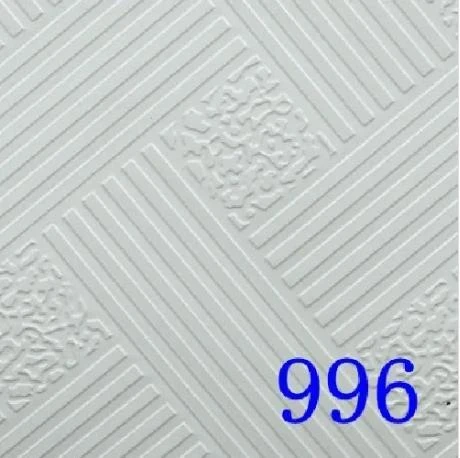- Afrikaans
- Albanian
- Amharic
- Arabic
- Armenian
- Azerbaijani
- Basque
- Belarusian
- Bengali
- Bosnian
- Bulgarian
- Catalan
- Cebuano
- Corsican
- Croatian
- Czech
- Danish
- Dutch
- English
- Esperanto
- Estonian
- French
- German
- Greek
- Hindi
- Indonesian
- irish
- Italian
- Japanese
- Korean
- Lao
- Malay
- Myanmar
- Norwegian
- Norwegian
- Polish
- Portuguese
- Romanian
- Russian
- Serbian
- Spanish
- Swedish
- Thai
- Turkish
- Ukrainian
- Uzbek
- Vietnamese
11월 . 23, 2024 18:09 Back to list
Understanding the Materials Used in Ceiling Grid Construction and Design
What Is Ceiling Grid Made Of?
A ceiling grid is a crucial component in modern building design, particularly in commercial and industrial spaces. It serves as the framework for suspended ceilings, often referred to as drop ceilings or T-bar ceilings. The ceiling grid is not only functional but also contributes to the aesthetic appeal of a space. Understanding what a ceiling grid is made of can provide insight into its durability, maintenance, and overall effectiveness.
Components of Ceiling Grid
The primary materials used in the construction of ceiling grids are steel and aluminum. Each of these materials offers unique advantages that cater to different architectural needs.
1. Steel Grid Systems Steel is the most common material used for ceiling grids, primarily due to its strength and durability. Steel grids are typically galvanized, meaning they are coated with a layer of zinc to provide rust protection and enhance longevity. This makes steel grids suitable for environments where moisture is a concern, such as kitchens or bathrooms. The steel grids come in various sizes, usually conforming to a standard layout of 2x4 or 2x2 feet, allowing for flexibility in design.
2. Aluminum Grid Systems Aluminum grids are another popular choice, especially in areas where aesthetics are paramount. They are lightweight, resistant to corrosion, and can be designed in various finishes. Furthermore, aluminum grids can be painted or anodized to match the interior design, offering a sleek and modern look. While they may not be as strong as steel grids, they are excellent for applications where weight is a consideration.
3. Suspension Systems In addition to the grid itself, the suspension system is vital for securely holding the ceiling panels in place. Most suspension systems are made from either steel or galvanized wire, which supports the grid and prevents sagging. These suspension components must adhere to local building codes and standards to ensure safety.
Types of Ceiling Panels
what is ceiling grid made of

Once the grid is installed, it provides support for various ceiling panels, which can be made of different materials, such as mineral fiber, fiberglass, or metal.
1. Mineral Fiber Panels One of the most common ceiling panel materials, mineral fiber panels are made from natural and synthetic fibers. They are lightweight, and provide excellent sound absorption and thermal insulation. These panels come in different textures and finishes, making them versatile for various applications.
2. Fiberglass Panels Fiberglass panels are known for their durability and resistance to moisture, making them suitable for humid environments. They also offer good acoustic properties and can be easily cleaned. Like mineral fiber panels, fiberglass panels come in various styles and colors.
3. Metal Panels For a contemporary and industrial look, metal panels made from aluminum or steel can be used. These panels are typically more expensive but offer high durability and a unique aesthetic that can elevate the interior design of the space.
Installation and Maintenance
The installation of a ceiling grid involves precise measurement and alignment to ensure that the grid is level and securely anchored to the structure above. Regular maintenance is largely straightforward, focusing on cleaning the tiles and inspecting the grid for any signs of corrosion or damage. If the ceiling tiles become stained or damaged, they can be replaced easily, allowing for quick repairs without disrupting the entire system.
Conclusion
In summary, ceiling grids are primarily composed of steel or aluminum, serving as the foundational framework for suspended ceilings. The choice of material impacts the grid's durability, aesthetic appeal, and maintenance requirements. Additionally, the type of ceiling panels used can vary widely, allowing for customization based on the needs of the space. Whether for a commercial office, retail environment, or an industrial facility, the ceiling grid plays a vital role in both function and form, underscoring its importance in modern architecture.
-
Transform Interiors with PVC Gypsum Ceiling: A Stylish, Durable, and Moisture-Resistant SolutionNewsMay.19,2025
-
The Smart Interior Upgrade: Discover the Durability and Versatility of Gypsum Ceiling Access Panel SolutionsNewsMay.19,2025
-
The Smart Choice for Interior Design: Discover the Value of PVC Gypsum Ceiling SolutionsNewsMay.19,2025
-
Mineral Fiber Ceiling Tiles: The Smart Blend of Performance and AestheticsNewsMay.19,2025
-
Mineral Fiber Ceiling Tiles: The Superior Choice Over Gypsum for Sound and Fire SafetyNewsMay.19,2025
-
Mineral Fiber Ceiling Tiles: Eco-Friendly Strength and Style for Every CeilingNewsMay.19,2025







